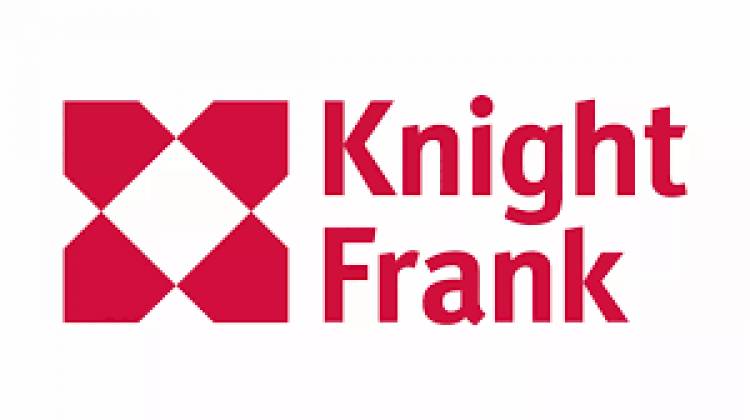India office market draws USD 700+ mn of PE in H1 2025; Total PE investment in real estate at USD 1.7 bn in H1 2025: Knight Frank India

Mumbai, June 26, 2025: Knight Frank India, in their latest assessment stated that Private Equity (PE) investments into Indian real estate sector witnessed a sharp 41% year-on-year (YoY) decline in the first half of 2025, totalling USD 1.7 bn spread across 12 deals. The office segment attracted the highest share of PE capital, with USD 706 mn invested in H1 2025, a 22% YoY growth. This reflects a shift in global capital flows due to elevated interest rates, tightening liquidity, and increased investor scrutiny over risk-adjusted and post-tax returns.
A Decade of Capital Cycles: PE Investment Volume and Deal Count (2011-H1 2025)
Source: Knight Frank Research, Venture Intelligence
*Investments considered till 15th June 2025
PE investments in Indian Real Estate decline 41% in H1 2025
|
|
Source: Knight Frank Research, Venture Intelligence
This downturn is not merely cyclical but highlights a broader structural shift in global and domestic capital views of the Indian real estate. Investors appear to be more focused on post-tax visibility, currency-adjusted returns and credible execution over scale or momentum. The number of transactions also dropped sharply from 24 in H1 2024 to 12 in H1 2025, further reflecting increased selectivity in deal-making. Yet, amid the overall decline, sectoral performance diverged significantly.
H1 2024 vs. H1 2025: Capital Shifts from Warehousing to Residential and Office
Source: Knight Frank Research, Venture Intelligence
The assessment highlights a significant shift in the composition of capital inflows. Western institutional capital recedes further in H1 2025, primarily due to narrowing India-US yield spread, INR depreciation (from 83.1 in Dec-23 to 85.6 per USD in H1 2025), and India’s 12.5% long-term capital gains tax, which affects post-tax returns. Meanwhile, domestic capital has stepped up substantially. Indian institutions accounted for 25% of total PE inflows during H1 2025, up from an average of 11% during 2011-2020, driven by deeper capital pools, regulatory stability, and maturing investment capabilities.
West to the East: The Structural Shift in Real Estate Capital Flows (2011–H1 2025)
Source: Knight Frank Research, Venture Intelligence
Regionally, in H1 2025, Mumbai led PE inflows with USD 468 mn, closely followed by Bengaluru at USD 453 mn. Kolkata – USD 374 mn, Hyderabad—USD 259 mn and Pune—USD 134 mn also attracted meaningful capital, while Chennai received USD 50 mn. Together, South Indian cities captured over 44% of total investments, underscoring a sustained regional shift in institutional investor preference.
Mumbai continues to lead, Southern Cities Surge in PE Real Estate Investments
Source: Knight Frank Research
Shishir Baijal, Chairman and Managing Director, Knight Frank India, said, “The current global economic environment marked by persistent inflation and tighter monetary conditions has led many Western funds to take a cautious, wait-and-watch stance, resulting in subdued private equity activity in the real estate sector. In contrast, India’s commercial real estate market continues to show strong fundamentals, driven by the return to office, rising absorption levels, and strengthening rental values. Similarly, the residential sector has seen year-on-year growth, and retail consumption remains steady, supported by overall economic momentum. These factors have encouraged investors to adopt a long-term outlook on the Indian market. As macroeconomic conditions in the West begin to ease, we expect global capital flows to return to Indian real estate, further supported by the country’s sustained growth and improving regulatory clarity.”
|
Trends in PE investments: Office |
Private equity investment in India’s office real estate sector in H1 2025 reflected measured optimism, driven by asset quality, prime locations, and long-term tenancy visibility. While overall capital deployment across real estate declined due to global macroeconomic pressures, the office segment stood out with USD 706 mn invested across three transactions, marking a 22% YoY increase from USD 579 mn in H1 2024.
Rather than broad-based investment, this growth was fuelled by strategic allocations into high-quality, Grade-A assets in core markets. Investors showed a preference for larger, stabilised or near-stabilised office spaces with strong cash flow potential, often through joint ventures or REIT-aligned platforms.
A notable trend in H1 2025 was the near-equal split between investments in ready and under-construction assets about 50% each.
Office sector PE investment
Source: Knight Frank Research, Venture Intelligence
*Investments considered till 17th June 2025
|
Trends in PE investments: Residential |
After witnessing a slowdown post 2017 due to regulatory shifts like RERA and GST, residential real estate has seen a transformation in investment strategy. While volumes in H1 2025 remained below the peak achieved in 2015-16, the nature of capital deployment has matured, with a sharper focus on structured and risk-mitigated approaches.
A key trend in H1 2025 was the return to credit instruments – 60% of the USD 500 mn invested came through debt structures, compared to 40% the previous year. Institutional investors preferred collateral-backed investments.
Debt vs. Equity Share in Residential PE Investments
Source: Knight Frank Research, Venture Intelligence
PE Investments Received Across India in Residential Sector
|
City |
Investment (USD mn) |
|
Bangalore |
215.0 |
|
Pune |
134.0 |
|
Mumbai |
115.0 |
|
Bangalore |
15.1 |
|
Hyderabad |
21.0 |
|
Total |
500 |
Source: Knight Frank Research, Venture Intelligence
Bengaluru and Pune dominated capital absorption, accounting for nearly USD 350 mn of total inflows. Mumbai received USD 115 mn, while Hyderabad drew modest but growing interest in plotted and villa-based developments—signalling expanding investor interest beyond traditional metros.
PE Investments in Residential Sector Dip 41% in H1 2025
Source: Knight Frank Research, Venture Intelligence
|
Trends in PE: investments: Warehousing |
Indian warehousing sector saw a sharp pause in H1 2025, with PE investments marking a 97% YoY decline to just USD 50 mn, down from USD 1.5 bn in H1 2024. Only one transaction was recorded, highlighting a temporary reassessment of growth expectations in a sector previously dominated by large, platform-level deals.
Investments in Warehousing dip 97% in H1 2025
Source: Knight Frank Research, Venture Intelligence
Over the past seven years, warehousing has consistently attracted long-term institutional capital, with over USD 10 bn invested since 2017 , driven by rapid e-commerce growth, policy-led manufacturing incentives (PLI), and supply chain diversification across Tier 1 and emerging urban hubs.
100% investment in new development led by a single deal
|
H1 2024 |
H1 2025 |
|
|
|
Source: Knight Frank Research, Venture Intelligence
|
Trends in PE: investments: Retail |
After a prolonged lull of over two years, India’s retail real estate sector H1 2025 saw equity inflows reaching USD 481 mn in the sector. The growth was driven by two large transactions, including a stabilised mall acquisition in south India by a listed REIT and another institutional buyout in an eastern metro, signalling renewed investor confidence in operational retail assets.
Since 2011, the sector has attracted over USD 4.4 bn across 33 recorded transactions. While metros like Mumbai, Bengaluru, Pune, and Chandigarh continue to dominate the investment landscape, recent transactions hint at a slow expansion of investor appetite toward emerging consumption hubs, though volumes outside core cities remain limited.
Annual PE Investments in Indian Retail Sector (2011–H1 2025)
Source: Knight Frank Research, Venture Intelligence
*Investments considered till 17th June 2025
|
Outlook |
Private equity investments in Indian real estate declined by 41% YoY in H1 2025, reflecting a shift in global capital allocation strategies. Investor decisions are now shaped by currency risk, post-tax returns, governance, and exit clarity. This moderation follows the post-COVID surge of 2021–2022, when India benefitted from ultra-low global interest rates, strong housing recovery, and sectoral reforms.
However, with rising global bond yields and INR depreciation, the yield advantage has narrowed. Capital is moving to jurisdictions offering clearer, risk-adjusted returns. While India’s macro fundamentals remain strong, the threshold for investment has risen.
PE Inflows and Monetary Shifts in However, the USA and UK
Source: Knight Frank Research, Venture Intelligence
*Investments considered till 17th June 2025
To reignite momentum, the sector must focus on institutional deal structuring, improved tax efficiency, and scalable platforms across core asset classes. The next wave of capital will depend on performance, not just potential. India remains a compelling long-term bet, but credibility, consistency, and execution will determine sustained investor confidence.




















